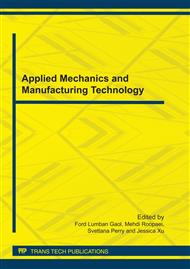p.26
p.30
p.38
p.43
p.49
p.55
p.59
p.63
p.71
Layup Analyzing of a Carbon/Glass Hybrid Composite Wind Turbine Blade Using Finite Element Analysis
Abstract:
This thesis use AOC15/50 blade as baseline model which is a composite wind turbine blade made of glass/epoxy for a horizontal axis wind turbine. A finite element modeling of composite wind turbine blade was created using the SHELL element of ANSYS. Then we study how to use the carbon fiber material replaces the glass fiber to make the hybrid blade, and find a suitable layup to improve the performance of the blade. The hybrid blade was made through introducing carbon fibers. Different models, with introducing different number of carbon fibers, 75% carbon fibers replace unidirectional glass fibers in spar cap of blade model which can achieve best structure performance. The wind turbine blades are often fabricated by hand using multiple of glass fiber-reinforced polyester resin or glass fiber-reinforced epoxy resin. As commercial machines get bigger, this could not to meet the demands. The advantages of carbon fiber composite materials are used by blade producer. Studies show that carbon fiber has high strength-to-weight ratio and resistance fatigue properties. Carbon fiber is mixed with epoxy resin to make into carbon fiber-reinforced polymer. Carbon fiber-reinforced polymer is the one of best blade materials for resistance bad weather. The stiffness of carbon fiber composite is 2 or 3 times higher than glass fiber composite [1], but the cost of carbon fiber composite is 10 times higher than glass fiber composite. If all of wind turbine blades are made of carbon fiber composite, it will be very expensive. Therefore carbon/glass fiber hybrid composite blade has become a research emphasis in the field of blade materials. This paper gives an example of finite element modeling composite wind turbine blade in ANSYS by means of the medium-length blade of AOC 15/50 horizontal axis wind turbine. This model can be directly used in dynamics analysis and does not need to be imported from the CAD software into finite element program. This finite element modeling of composite wind turbine blade was created using the SHELL element of ANSYS. Then we study how to use the carbon fiber material replaces the glass fiber to make the hybrid blade, and find a suitable lay-up to improve the performance of the blade.
Info:
Periodical:
Pages:
49-54
Citation:
Online since:
August 2011
Authors:
Price:
Сopyright:
© 2011 Trans Tech Publications Ltd. All Rights Reserved
Share:
Citation:


